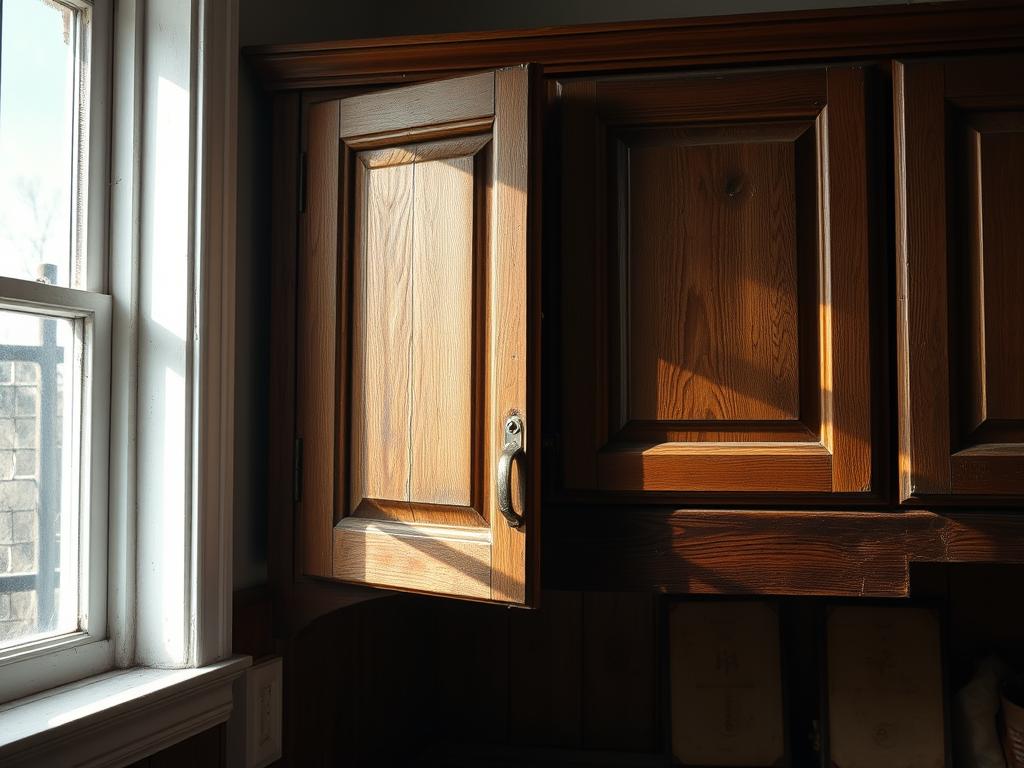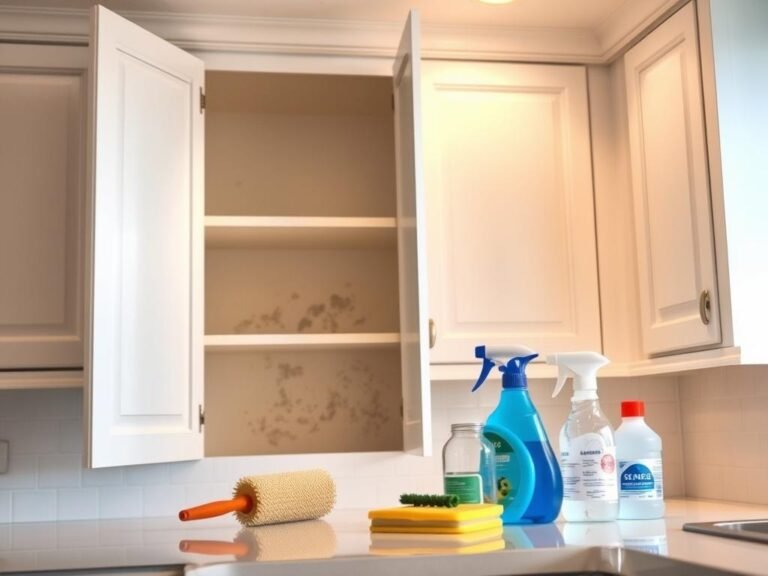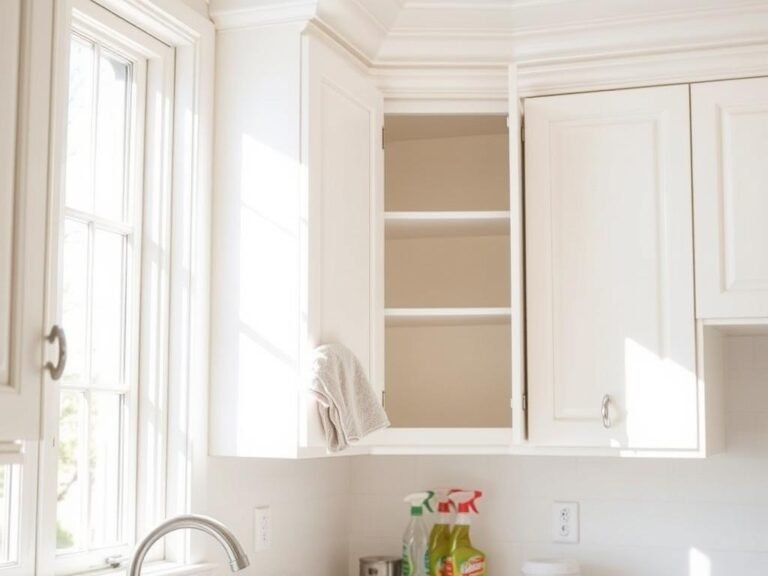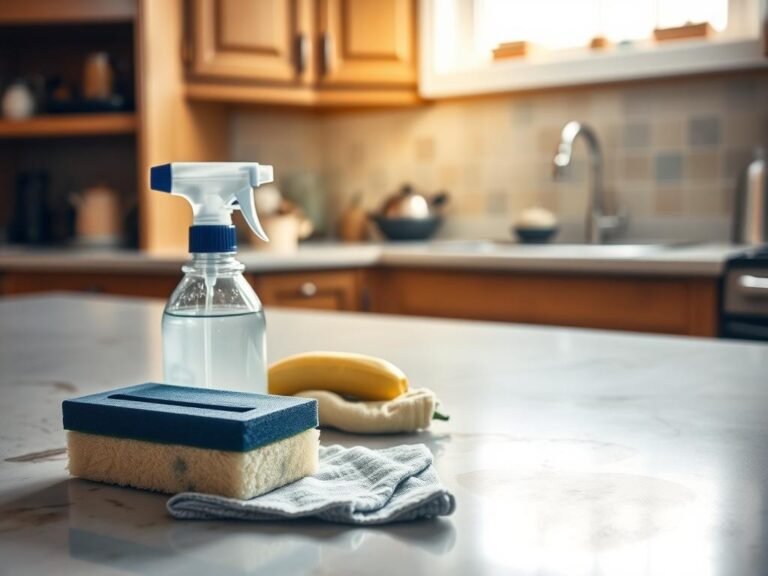Wooden cabinets bring warmth and elegance to any kitchen, but they require regular care to maintain their beauty. Over time, grease and grime can build up, leaving surfaces dull and sticky. This not only affects their appearance but also their functionality1.
Our kitchens are busy spaces, and cabinets are opened and closed frequently, contributing to wear and residue accumulation. Cooking activities, especially those involving oil and steam, add to the challenge1. Without proper maintenance, this buildup can become stubborn and harder to remove.
We’ll guide you through a process that restores the natural finish of your cabinets while preventing damage. Using non-abrasive cleaners and following the wood’s grain ensures effective results2. Simple household items like vinegar and soap can make a big difference in keeping your cabinets looking their best.
Key Takeaways
- Wooden cabinets add elegance but need regular care to stay clean.
- Grease and grime buildup can make surfaces sticky and dull.
- Non-abrasive cleaners and gentle tools protect the wood’s finish.
- Simple solutions like vinegar and soap are effective for cleaning.
- Proper drying after cleaning prevents sticky residue.
Getting Started with Your Wood Kitchen Cabinets
Effective care for your cabinets begins with a thorough assessment of their current state. Identifying areas with heavy grease or sticky residue helps us plan the right approach. This step ensures we avoid damage to delicate finishes while achieving the best results3.
Assessing Cabinet Condition and Planning Your Approach
Start by inspecting your surfaces for buildup. Areas near stoves or sinks often accumulate more grease. This evaluation helps us determine the level of cleaning required. For delicate finishes, we’ll use gentler methods to preserve their beauty4.
Gathering Essential Supplies and Choosing a Cleaning Solution
Having the right tools and solutions is key to success. Here’s a list of essentials:
| Item | Purpose |
|---|---|
| Warm water | Base for cleaning solutions |
| Mild dish soap | Gentle grease removal |
| Baking soda | Natural abrasive for tough stains |
| White vinegar | Degreasing and disinfecting |
| Microfiber cloths | Soft and reusable cleaning |
| Soft sponges | Safe for delicate surfaces |
For stubborn grease, a 50/50 mixture of water and vinegar works wonders3. If you prefer commercial products, choose a wood-safe cleaner to protect your surfaces. Always test solutions on a small area first to ensure compatibility4.
Finally, safety is paramount. Ensure proper ventilation and wear gloves if needed. A thorough inspection before starting prevents unintended damage and ensures a smooth process.
Step-by-Step Guide: How to Clean Sticky Wood Kitchen Cabinets
Restoring the natural beauty of your cabinets starts with a simple, step-by-step process. We’ll walk you through each stage, ensuring your surfaces are spotless and protected.
Mixing Cleaning Solutions and Proper Application Techniques
Begin by preparing your cleaning solution. A mix of warm water and mild dish soap works well for most surfaces. For tougher jobs, add a tablespoon of baking soda for extra power5. Combine the ingredients in a spray bottle for easy application.
Spray the solution onto the surface, focusing on areas with visible residue. Use a microfiber cloth to wipe in circular motions, following the wood grain. This method ensures even coverage and prevents streaks6.
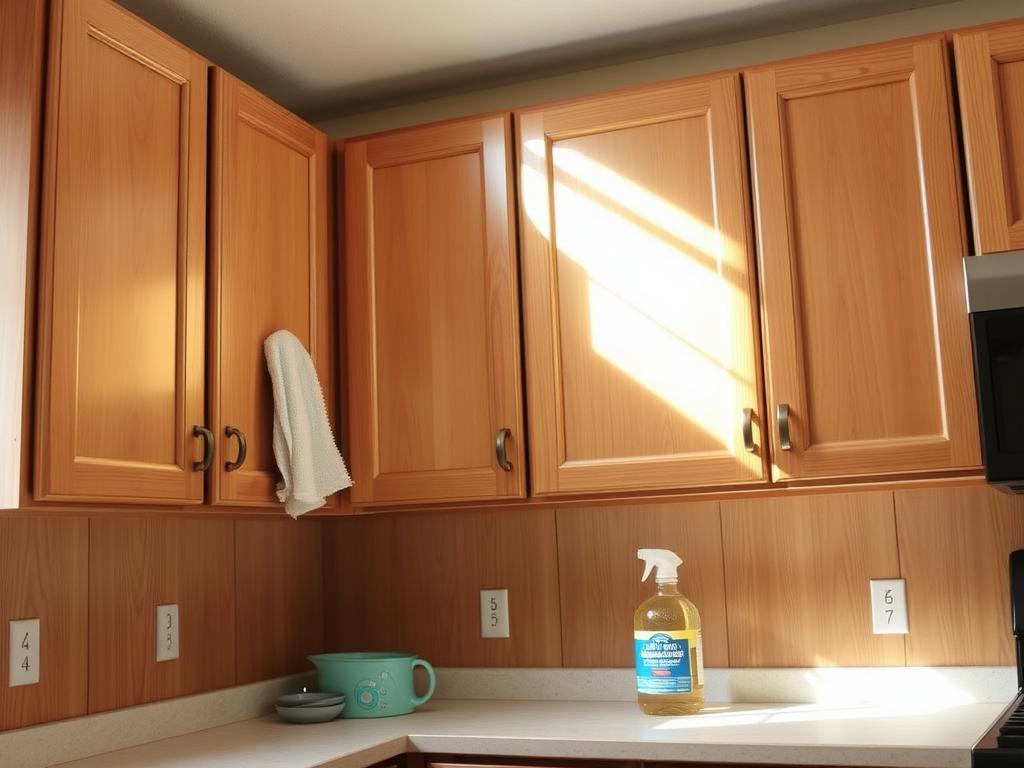
Addressing Stubborn Grease and Sticky Residue
For stubborn spots, create a paste with baking soda and water. Apply it to the affected area and let it sit for a minute. Gently scrub with a soft-bristled toothbrush to lift the residue without damaging the finish5.
If grease persists, a 50/50 mix of white vinegar and water can break it down. Spray the solution, wait a minute, and wipe clean. This technique is both effective and safe for most finishes6.
Rinsing, Drying, and Reassembling Cabinet Hardware
After cleaning, rinse the surface with a damp cloth to remove any leftover solution. Dry thoroughly with a lint-free cloth to prevent water spots or streaks5.
Reattach any removed hardware, ensuring everything is secure. This final step protects your cabinets and keeps them looking their best6.
Maintaining and Protecting Your Clean Cabinets
Keeping your cabinets in top shape requires consistent care and the right techniques. Regular maintenance not only preserves their appearance but also prevents future buildup. With simple routines and protective measures, we can ensure they stay pristine for years.
Regular Cleaning Routines to Prevent Buildup
Daily or weekly wipe-downs are essential to avoid grease and grime accumulation. Use a mild cleaning solution in a spray bottle for quick and effective results. A soft sponge ensures gentle application, protecting the surface from scratches7.
Focus on areas near cooking surfaces, as they tend to collect more residue. A mix of warm water and vinegar works well for these spots. Always dry the surface thoroughly to prevent water damage8.
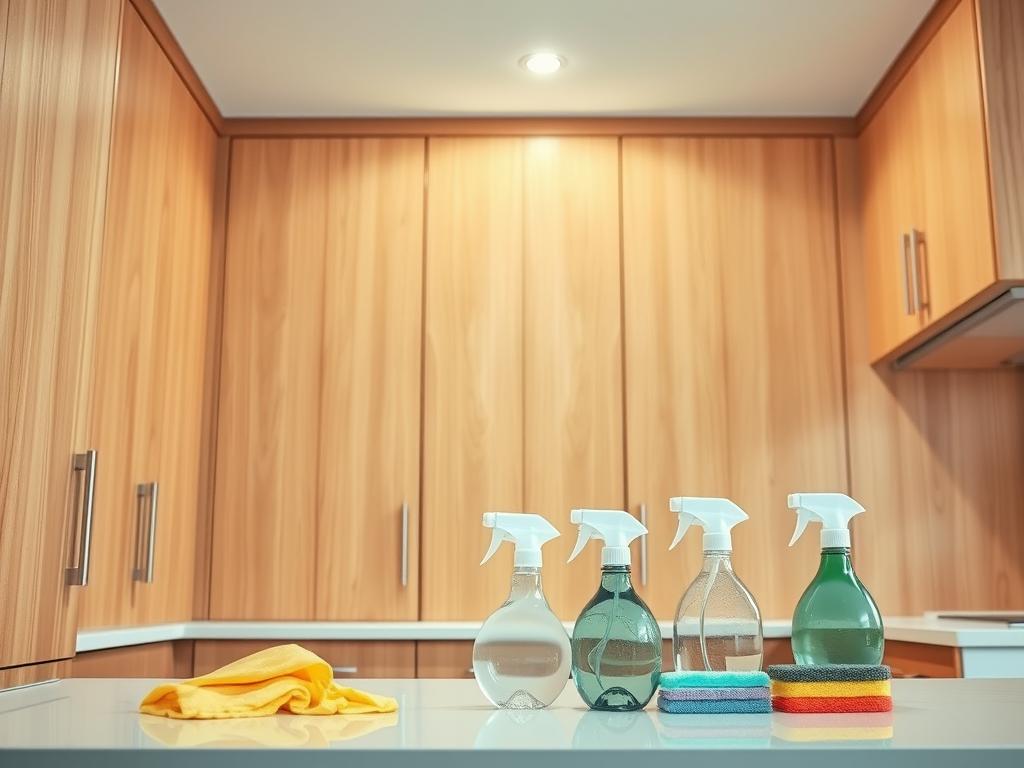
Using Protective Polishes and Natural Ingredients
Applying protective polishes enhances the wood’s shine and guards against dirt. Natural ingredients like olive oil are excellent for maintaining a lasting finish. Use a microfiber cloth to buff the surface in circular motions9.
For added protection, consider cabinet liners to shield interiors from spills and stains. These liners make future cleaning easier and extend the life of your cabinets7.
| Product | Benefits |
|---|---|
| Olive Oil | Natural shine enhancer |
| Commercial Wood Polish | Long-lasting protection |
| Cabinet Liners | Prevents interior stains |
| Vinegar Solution | Effective degreaser |
By incorporating these practices, we can keep our cabinets looking their best while avoiding sticky residue and damage. Routine care ensures they remain a beautiful and functional part of our homes9.
Conclusion
Maintaining the beauty and functionality of your surfaces is easier than you think with the right approach. By assessing, cleaning, and rinsing properly, we can remove even the toughest stains and grime. A mix of warm water and mild soap works wonders, while a toothbrush helps tackle stubborn spots10.
Consistency is key. Regular wipe-downs prevent buildup, and using natural solutions like linseed oil or a small amount of baking soda paste preserves the finish11. These simple steps ensure your surfaces stay pristine for years.
We encourage you to follow these methods and share your experiences. A little extra care goes a long way in keeping your home looking its best. Together, we can create a community of proud homeowners who take pride in their spaces12.

